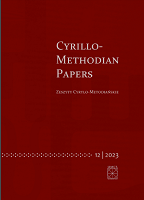POLSKIE GNIAZDA SŁOWOTWÓRCZE Z RZECZOWNIKAMI WYJŚCIOWYMI NAZYWAJĄCYMI PORY ROKU W PORÓWNANIU Z ROSYJSKIMI
POLISH DERIVATIONAL NESTS WITH NOUNS DELINEATING THE SEASONS OF THE YEAR – A COMPARISON WITH THE RUSSIAN LANGUAGE
Author(s): Anna StasienkoSubject(s): Morphology, Lexis, Semantics, Comparative Linguistics, Western Slavic Languages, Eastern Slavic Languages
Published by: Wydawnictwo Naukowe Uniwersytetu Marii Curie-Sklodowskiej
Keywords: derivational nest; seasons of the year; Polish language; Russian language;
Summary/Abstract: The article discusses derivational nests of Polish nouns ‘wiosna’, ‘lato’, ‘jesień’, ‘zima’ in comparison with their Russian equivalents ‘весна’, ‘лето’, ‘осень’, ‘зима’. The analysis shows that in both languages the nests include nouns, adjectives, verbs and adverbs, and that the most productive method of word formation is the attachment of a derivational suffix. The semantics of the derivatives is influenced by the primary meaning, i.e. the name of the season. The main difference lies in the number of derivatives based on ‘zima’ / ‘зима’. In the Polish language there are 21 lexemes against 62 in Russian. Also, derivational nests in Russian contain a greater number of verbs, as well as deverbal nouns and adjectives.
Journal: Zeszyty Cyrylo-Metodiańskie
- Issue Year: 12/2023
- Issue No: 1
- Page Range: 142-155
- Page Count: 14
- Language: Polish

